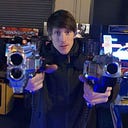Game Retrospective: Super Metroid

On the 19th of March 1994, Super Metroid was first released for the Super Famicom/Super NES in Japan. The game would release in North America and across Europe just a few months later.
Developed by Nintendo’s R&D1, with additional support by Intelligent Systems, Super Metroid was worked on by a team of 15 people over approximately two and a half years and is the third title in the Metroid series. Metroid series co-creator, and character designer for the first Metroid game, Yoshio Sakamoto, took on the role of director, while Makoto Kano, a designer who had worked on both Metroid and Metroid II: Return of Samus, stepped up as the game’s producer. Although he would have no direct input throughout the development of the game, famed Nintendo designer and creator of the Game Boy, Gunpei Yokoi, would be the game’s general project manager.

Immediately following the events of the previous game, 1991’s Metroid II: Return of Samus, Super Metroid once again casts the player as bounty hunter Samus Aran, as she travels to the planet Zebes to retrieve an infant Metroid stolen by the Space Pirate leader, Ridley. Super Metroid’s gameplay focuses primarily upon exploration and requires the player hunt for power-ups to open new areas, upgrade weapons and discover hidden secrets. The game introduces several new features over its predecessors such as Samus now being able to fire in all directions, the inclusion of an inventory screen where players can access and equip items, and an automap that allows the player to track their position.

Development of Super Metroid initially began following a suggestion from producer Makoto Kano, in response to the popularity of the Metroid series in the West. In a 2014 interview with Retro Gamer, Super Metroid director, Yoshio Sakamoto, explained, “My boss [Kano] told me that Metroid was really popular in North America, so he encouraged me to produce a new Metroid game with the high-quality graphics that were becoming possible thanks to the Super Famicom.” From the very start, the team set out to create a title that not only surpassed previous entries graphically but also one that, according to Sakamoto, “achieved a greater presence, something closer to a reality.”
Super Metroid’s music was handled by composers Kenji Yamamoto and Minako Hamano. Yamamoto, who is also credited as the game’s sound programmer and sound effects creator, had previously composed the music for such games as Mike Tyson’s Punch-Out!! and Famicom Wars, while Hamano had composed much of the background music for the 1993 Game Boy release, The Legend of Zelda: Link’s Awakening. In a 2017 interview on Nintendo.com, Yamamoto, while discussing the sound design for Super Metroid, explained, “I wanted to undertake a fresh challenge. In order to portray the world of Super Metroid as realistically as possible, I knew I needed rich, expressive sounds.” With the advanced Super NES hardware, Yamamoto went on to explain that he was able to “play sounds that you didn’t often hear in video games”, including several choral and orchestral pieces.
The final few months of development would prove to be an extremely frantic period for the team. “During the final six months of development, the Nintendo building became like a boarding house for the Super Metroid team,” shared Sakamoto. During this time, many of the team would regularly work on the game throughout the night. A dedicated ‘nap room’ was set up adjacent to where the developers were working that allowed the team to sleep, albeit in shifts.

Super Metroid was met with critical acclaim upon release with particular praise given to the game’s tight gameplay, impressive graphics and accomplished sound. The game would go on to receive numerous awards and accolades, with GamesRadar, in 2012, even naming it the best SNES game of all time. Despite Super Metroid’s success, it would be eight years until we saw another Metroid game: the 2002 release of both Metroid Fusion on the Gameboy Advance and Metroid Prime on the GameCube.
Did you know? — The game’s spoken opening, “The last Metroid is in captivity… The Galaxy is at peace,” was voiced by Nintendo of America localisation manager, Daniel “Dan” Owsen. His voice can also be heard in Star Fox.
🕹Have you played Super Metroid? Which was your favourite Metroid game? What are your memories of this series?🕹
